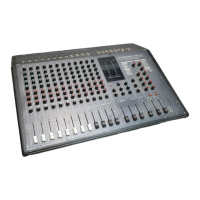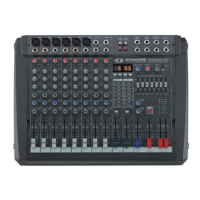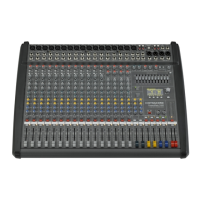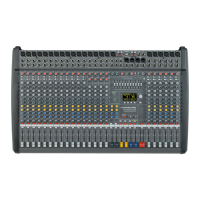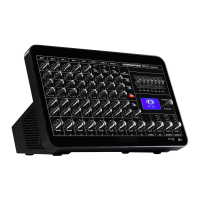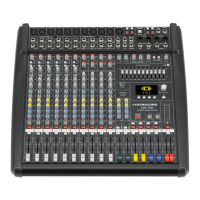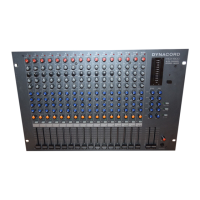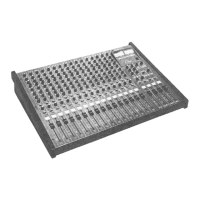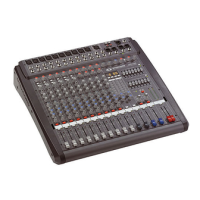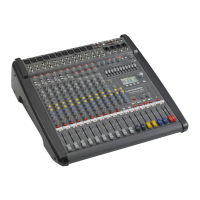
Do you have a question about the Dynacord Power Mixer PowerMate 1600 and is the answer not in the manual?
| Channels | 16 |
|---|---|
| Frequency Response | 20 Hz - 20 kHz |
| Total Harmonic Distortion (THD) | < 0.1% |
| Weight | 18.5 kg |
| Mic Inputs | 8 |
| Line Inputs | 8 |
| Signal-to-Noise Ratio | > 100 dB |
| Input Channels | 16 |
| Input Connectors | XLR, 1/4" TRS |
| EQ Bands | 3-band |
| Phantom Power | +48V |
| Output Connectors | Speakon |
Essential safety precautions for operating the Dynacord PowerMate mixer.
Guidelines for qualified personnel performing service on the Dynacord PowerMate.
General introduction to the Dynacord PowerMate mixer's features and benefits.
Instructions for unpacking the device and information on the warranty.
Guidance on proper placement and initial electrical connections for the PowerMate.
Details on connecting low-impedance microphones using XLR connectors.
Information on connecting electronic instruments and high-level sources via LINE inputs.
Using the stereo phone jack for signal path insertion and direct output.
Adjusting input sensitivity for MIC and LINE signals to optimize S/N ratio.
Using filters and EQ for shaping the audio signal's frequency response.
Applying filters to enhance vocal clarity and reduce low frequencies.
Controlling signal levels sent to internal FX units and monitor mixes.
Controls for panning, muting, PFL, signal monitoring, and volume adjustment.
Connecting microphones to stereo channels via XLR.
Connecting stereo sources like keyboards and drum machines.
Adjusting sensitivity and matching levels for stereo inputs.
Shaping the frequency response of stereo input signals.
Controls for AUX/FX sends, BAL, MUTE, PFL, and volume for stereo channels.
Routing audio signals to the internal FX1 and FX2 units.
Procedure to set custom default programs for FX units.
Controls for FX display, selection, activation, and monitoring peak levels.
Adjusting the amount of effects mixed into the main output.
Output for monitoring and FX, with pre/post fader selection.
Combating acoustical feedback in monitor mixes.
Muting AUX sends and performing pre-fader listening.
Controlling master output volume and shaping overall sound with 7-band EQ.
Monitoring power amplifier status and master output levels.
Optical monitoring of Left/Right master output levels.
Engaging standby mode and monitoring the master stereo signal.
Adjusting the output levels of the main Left and Right outputs.
Outputs for mono summing, headphones, and volume control.
Connections for recording (REC SEND) and playback (2TRACK RETURN).
Connecting external devices to master inserts, outputs, and inputs.
Connectors for external footswitches and gooseneck lamps.
Technical specifications of the internal power amplifier's performance and features.
Connecting loudspeakers using SPEAKON connectors.
Controls for powering the unit on/off and fuse protection.
Guidelines for selecting and using high-quality audio cables.
Proper connection of loudspeakers using SPEAKON connectors.
Choosing between balanced and unbalanced cables for audio signals.
Guidance on positioning speakers for optimal sound.
Steps for adjusting input levels and EQ for microphones and stereo sources.
Procedures for setting up the main mix and monitor mix.
Connecting an external amplifier for increased speaker capacity.
Using internal power amps for monitor or side-fill purposes.
Example setup for connecting the maximum number of speakers.
Example setup using internal amps with active crossovers.
